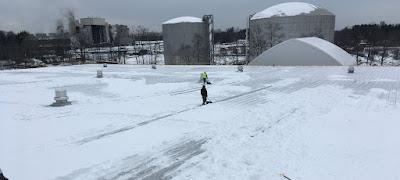A building comprises several structural elements that must all work together, and it makes sense to know how each part is functioning in relation to the other. It is much like a human body in that way. And just like you can tell a person's health by measuring temperature and blood pressure, for example, gathering data on various aspects of a building is just as vital.
That’s why we’ll look at the benefits of a building health monitoring system in this post from Safe Roof Systems.
An automatic monitoring system for your building continually gathers data and allows you to access real-time information on its condition. Then, with that knowledge, you can assess the overall health of the structure while zeroing in on any areas of concern. From that point, you can determine problem spots and address them before they become serious conditions.
A building monitoring system gives you peace of mind that you have accurate information about a roof snow load, for example, rather than having to go by guesswork and supposition. In some cases, it may also be beneficial from an insurance aspect as you have extra information that correlates to structural safety.
Please feel free to reach out to our team at Safe Roof Systems for further information on this topic.






